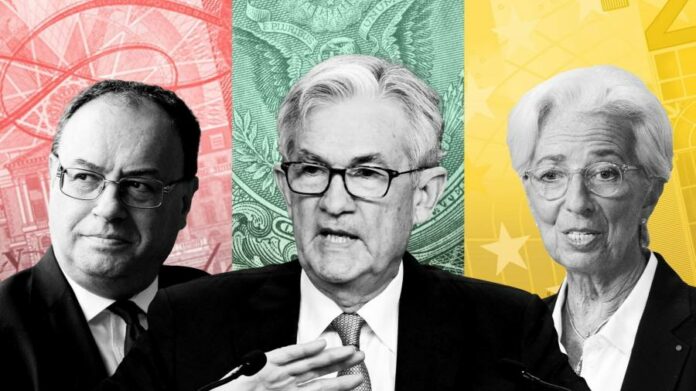In 2015, following several false alarms that prices would take off, former US Treasury secretary Lawrence Summers said the Federal Reserve should not raise interest rates until they had seen “the whites of inflation’s eyes”. Now, with inflation near 40-year highs across the developed world, central bankers are instead worried about easing off monetary tightening before there is firm evidence that price pressures are waning. They are right to be wary of high inflation becoming entrenched. But as interest rates climb, they face an increasingly challenging balancing act as the risks of deeper economic downturns and financial market ructions are also mounting.
Despite central banks increasing interest rates this year with a synchronicity not seen in the past five decades, inflation in advanced economies has remained stubbornly high. Looser fiscal policy and, outside the US, weaker currencies have added to existing price pressures — including from labour shortages, high energy and food prices, and choked-up supply chains. The US and British central banks are both expected to deliver hefty rate rises in meetings in the coming week. The European Central Bank on Thursday raised its deposit rate to its highest since 2009.
With inflation running at four to five times target rates, central banks will need to push up the cost of credit further yet. The longer inflation remains elevated, the greater the likelihood of high prices becoming hard-wired into expectations, driving wages and prices up further. Indeed, some measures of medium-term household and business inflation expectations in the UK, eurozone, and US are still above the 2 per cent target. Central bankers are also aware that attempting to row back from a high-inflation regime, once entrenched, would require a more aggressive and costlier tightening. And while energy and supply chain price pressures have eased recently, upside risks remain.
Yet as monetary policy has become more restrictive, calls have grown for central banks to ease off amid rising recession risks. Higher rates are already curbing demand: corporate borrowing conditions have tightened, mortgage repayments costs are increasing and there are nascent signs that labour markets are cooling. There is a risk central banks go too far; turning a slowdown into a crash. That could mean a wave of business insolvencies, steep falls in house prices and higher joblessness.
After a decade of low interest rates and ample liquidity, there are also warning signs that the rapid rise in rates — and planned shrinking of bloated central bank balance sheets — may upset financial stability. Recent upheavals in UK pension funds demonstrated just how volatile markets are. Meanwhile, strains have been building in the US Treasury market and, in the eurozone, rising rates are adding pressure to peripheral sovereign bond spreads.
Setting monetary policy is far from an exact science, but right now the risks of both over- and under-tightening are amplified, particularly as economic uncertainty is also high. Central bankers need to judge how quickly higher rates are passing through to the real economy and the knock-on impacts of central bank actions elsewhere. Gauging policy is even harder as governments try to cushion economies against high energy costs — and as geopolitical tensions rise.
Central banks need to stay focused on bringing inflation down. But they will have to tread with ever more care, keeping a firm eye on brewing economic and financial market risks. Above all, they need to be wary that by trying to mitigate the risk of high inflation becoming endemic, they do not unwittingly unleash a whole new set of threats.






